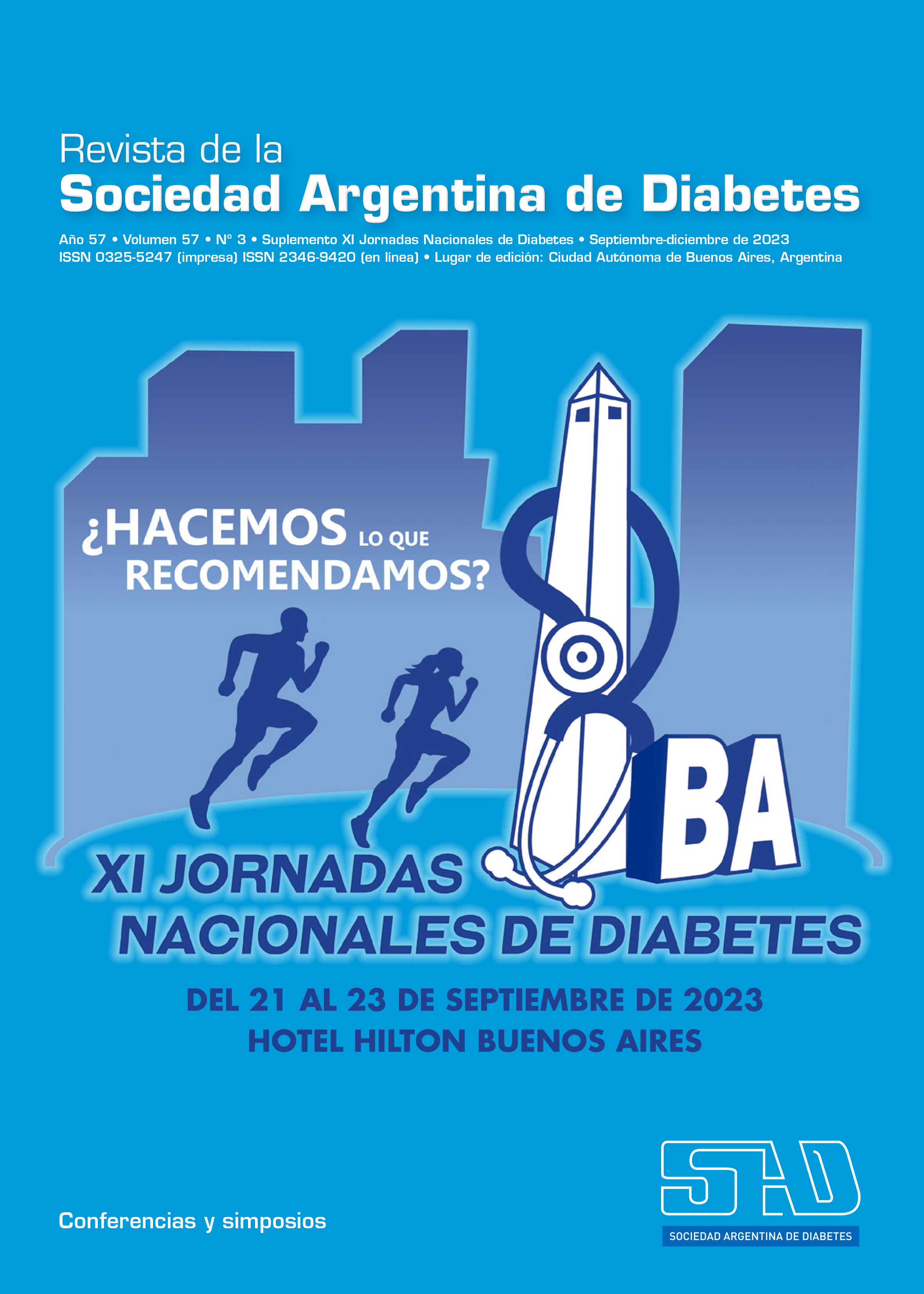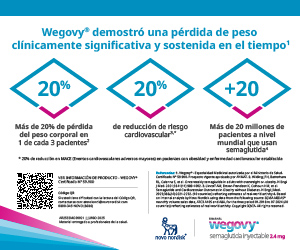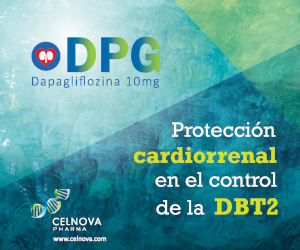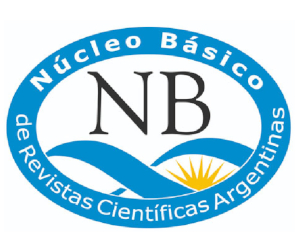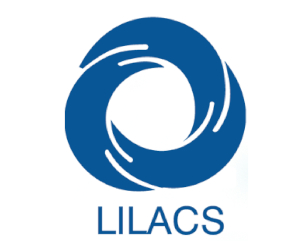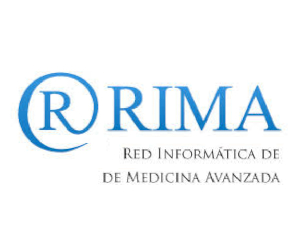CONFERENCIA. Diabetes mellitus: magnitud del problema, su fisiopatología, diagnóstico y tratamiento
DOI:
https://doi.org/10.47196/diab.v57i3Sup.694Palabras clave:
diabetes, fisiopatología, diagnóstico, tratamientoResumen
Comenzaré señalando lo que Frederick Grant Banting mencionó en su discurso de recepción del Premio Nobel por el descubrimiento de la insulina: “La hormona no es una cura, es un tratamiento que mantiene viva a la gente, y si queremos prevenir las complicaciones a largo plazo de la diabetes mellitus (DM), necesitamos entender cómo se secreta normalmente la insulina y qué está fallando en dicha enfermedad”.
Por su parte, otro grande de la diabetología, Elliot Joslin, en 1925 en su Tratado de Diabetes, mencionó que: “Debería haber un programa de educación que explicara a la comunidad la importancia de la dieta, combatir el sedentarismo para evitar la obesidad y prevenir la aparición de la DM, y mostrar también el rol de estas medidas en el control y tratamiento de esta enfermedad”. Pero terminaba con una frase lapidaria para el gremio: este tipo de programa debería comenzar su difusión entre los médicos.
Sin embargo, de alguna manera la duda de su beneficio se generó, y en 2009 la Fundación Cochrane1 concluyó que la educación individual de personas con DM2 solo muestra beneficios cuando la hemoglobina glicosilada (HbA1c) es mayor a 8% y se necesitan nuevas evidencias que demuestren los beneficios de la educación, especialmente a largo plazo1. Esta última frase está especialmente dedicada para quienes nos dedicamos a la educación de personas con DM. Pero sin dudas hoy podemos afirmar, parafraseando el tango Cambalache de Enrique Santos Discépolo, que las frases de Banting y Joslin fueron ciertas en 1925 y en 2022 también.
Citas
I. Duke SA, Colagiuri S, Colagiuri R. Individual patient education for people with type 2 diabetes mellitus. Cochrane Database Syst Rev 2009 Jan 21;1. doi: 10.1002/14651858.CD005268.pub2.
II. Gerich JE, Meyer C, Woerle HJ, Stumvoll M. Renal gluconeogenesis: its importance in human glucose homeostasis. Diabetes Care 2001;24:382-91.
III. Wilding JP. The role of the kidneys in glucose homeostasis in type 2 diabetes: clinical implications and therapeutic significance through sodium-glucose co-transporter 2 inhibitors. Metabolism 2014;63:1228-37.
IV. Wahren J, Ekberg K. Splanchnic regulation of glucose production. Annual Review of Nutrition 2007; 27:329-345.
V. Kyoung-Jin Oh, et al. CREB and FoxO1: two transcription factors for the regulation of hepatic gluconeogénesis. BMB Rep 2013;46:567.
VI. Gagliardino JJ, de la Hera M, Siri F; Grupo de Investigación de la Red QUALIDIAB. Evaluación de la calidad de la asistencia al paciente diabético en América Latina. Rev Panam Salud Publica/Pan Am J Public Health 2001;10(5).
VII. Elgart JF, Asteazarán S, De La Fuente JL, Camillucci C, Brown JB, Gagliardino JJ. Direct and indirect costs associated to type 2 diabetes and its complications measured in a social security institution of Argentina. Int J Public Health 2014; 59:851-7.
VIII. Olivera EM, Pérez-Duhalde E, Gagliardino JJ. Costs of temporary and permanent disability induced by diabetes. Diabetes Care 1991;14:593-596.
IX. Elgart JF, Caporale JE, Asteazarán S, De La Fuente JL, Camilluci C, Brown JB, González CD, Gagliardino JJ. Association between socioeconomic status, type 2 diabetes, and its chronic complications in Argentina. Diabetes Research and clinical practice 2014;104:241-247.
X. Herman WH, Ye W, Griffin SJ, et al. Early detection and treatment of type 2 diabetes reduce cardiovascular morbidity and mortality. A simulation of the results of the Anglo-Danish-Dutch Study of Intensive Treatment in People With Screen-Detected Diabetes in Primary Care (ADDITION-Europe). Diabetes Care 2015;38(8):1449-55.
XI. Gagliardino JJ, Elgart J, Forti L, et al. Type 2 diabetes: prescription patterns and treatment outcomes of IDMPS survey in Argentina. Diabetes Res Clin Pract 2019; 153:86-92.
XII. Brown JB, Nichols GA, Perry A. The burden of treatment failure in type 2 diabetes. Diabetes Care 2004 Jul;27(7):1535-40.
XIII. Lachin JM, Genuth S, Cleary P, Davis MD, Nathan DM. Retinopathy and nephropathy in patients with type 1 diabetes four years after a trial of intensive therapy. N Engl J Med 2000 Feb 10;342(6):381-9.
XIV. Gagliardino JJ, Elgart J, Ré M, et al. Diabetes primary prevention program: new insights from data analysis of recruitment period. Diabetes Metab Res Rev 2018 Jan;34(1).
XV. Gerstein HC, Santaguida P, Raina P, et al. Annual incidence and relative risk of diabetes in people with various categories of dysglycemia: a systematic overview and meta-analysis of prospective studies. Diabetes Res Clin Pract 2007 Dec;78(3):305-12.
XVI. Butler AE, Bonner-Weir S, Rizza RA, Butler PC, et al. Beta-cell deficit and increased beta-cell apoptosis in humans with type 2 diabetes. Diabetes 2003 Jan;52(1):102-10.
XVII. Rütti S, Ehses JA, Sibler RA, Prazak R, Rohrer L. Low- and high-density lipoproteins modulate function, apoptosis, and proliferation of primary human and murine pancreatic beta-cells. Endocrinology 2009 Oct;150(10):4521-30.
XVIII. Gagliardino JJ, Salazar MR, Espeche WG, et al. Arterial stiffness: its relation with prediabetes and metabolic syndrome and possible pathogenesis. J Clin Med 2021 Jul 23;10(15):3251.
XIX. Lean MEJ, Leslie WS, Barnes AC, et al. Primary care-led weight management for remission of type 2 diabetes (DiRECT): an open-label, cluster-randomized trial. The Lancet 2018;391(10120):541-551.
XX. Cnop M, Hughes SJ, Igoillo-Esteve M, Hoppa MB, et al. The long lifespan and low turnover of human islet beta cells estimated by mathematical modelling of lipofuscin accumulation. Diabetologia 2010 Feb;53(2):321-30.
XXI. Zanone MM, Favaro E, Camussi G, et al. From endothelial to beta cells: insights into pancreatic islet microendothelium. Curr Diabetes Rev 2008 Feb;4(1):1-9.
XXII. Román C, Maiztegui B, Del Zotto H, Gagliardino JJ, Flores LE. INGAP-PP effects on β-cell mass and function are related to its positive effect on islet angiogenesis and VEGFA production. Molecular and Cellular Endocrinology 2018;470:269-280.
XXIII. Maiztegui B, Roman C, Barbosa H, Boschero C, Gagliardino JJ. Role of islet glucokinase, glucose metabolism, and insulin pathway in the enhancing effect of islet neogenesis-associated protein upon glucose-induced insulin secretion. Pancreas 2015;44(6):959-966.
XXIV. Dungan KM, Buse JB, Ratner RE. Effects of therapy in type 1 and type 2 diabetes mellitus with a peptide derived from islet neogenesis associated protein (INGAP). Diabetes Metab Res Rev 2009 Sep;25(6):558-65.
XXV. Lynn S, Espinosa-Silva YR, Diambra L, McCarthy AN, Liping L, Ru B, Román C, Maiztegui B, Flores LE, Gagliardino JJ. A new analog of islet neogenesis associated protein with higher structural and plasma stability. J Biomol Struct Dyn 2021 Feb;39(3):766-776.
Descargas
Publicado
Número
Sección
Licencia
Derechos de autor 2023 a nombre de los autores. Derechos de reproducción: Sociedad Argentina de Diabetes

Esta obra está bajo una licencia internacional Creative Commons Atribución-NoComercial-SinDerivadas 4.0.
Dirección Nacional de Derecho de Autor, Exp. N° 5.333.129. Instituto Nacional de la Propiedad Industrial, Marca «Revista de la Sociedad Argentina de Diabetes - Asociación Civil» N° de concesión 2.605.405 y N° de disposición 1.404/13.
La Revista de la SAD está licenciada bajo Licencia Creative Commons Atribución – No Comercial – Sin Obra Derivada 4.0 Internacional.
Por otra parte, la Revista SAD permite que los autores mantengan los derechos de autor sin restricciones.



